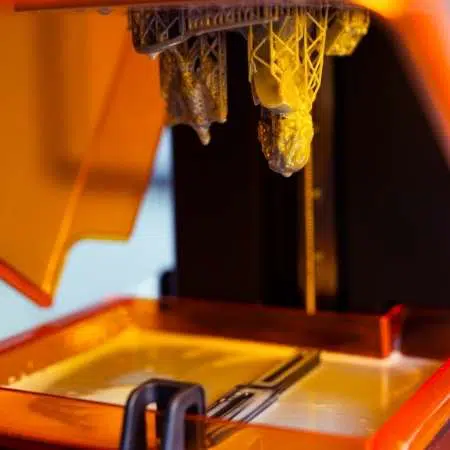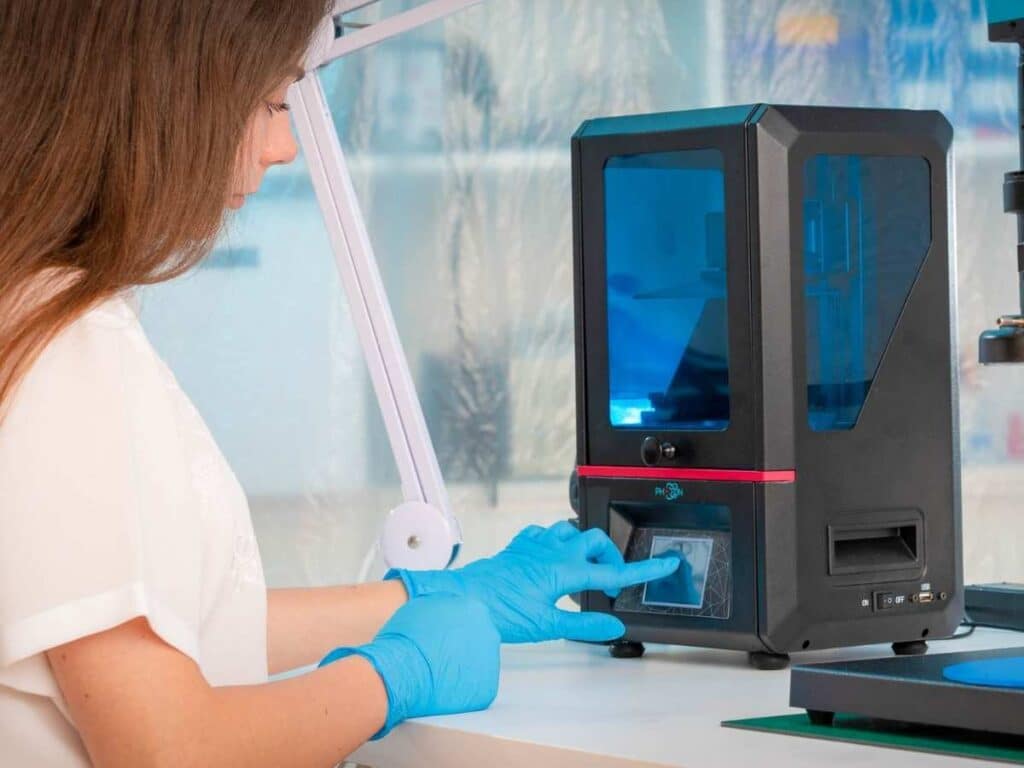3D printing has come a long way in just a few short years. Many entry-level 3D printing enthusiasts utilize a newer method of 3D printing that uses plastic filament as the printing material. However, an older and more complex method utilizes liquid resin to create highly detailed and durable pieces.
Leftover 3D printing resin can be reused for your next printing projects or thrown out. In order to safely reuse 3D printing resin, there are several processes involved. Working with resin is more complex than filament because of the chemicals involved in making it.
This article will detail the best practices to follow with leftover 3D resin, whether you intend to reuse it on your next 3D-printed model or simply throw it away. We’ll cover both unused liquid resin and hardened resin used in the creation and support of the model. Additionally, we will look into the best practices for storing resin and maintaining your 3D printer’s resin vat.
What To Do With Leftover 3D Printing Resin
3D printing resin comes in bottles, which can be poured into the 3D printer’s resin vat or tank for use. After the project has been printed, there may be unused liquid resin remaining in the tank.
There may also be a resin that has been hardened and printed to support the construction of the model but will be removed as the piece is finalized.
You might be wondering what to do with this leftover 3D printing material.
Unused Liquid Resin

Liquid resin is made with hazardous chemicals that can be dangerous if mismanaged. If not properly stored or disposed of, you will—at best—end up wasting perfectly good resin or—at worst—cause damage to you, your printer, or the environment.
When the liquid resin is exposed to ultraviolet light, it hardens and eventually cures. In this state, it is harmless and non-toxic. However, it can’t be used again.
If the leftover resin is in a liquid state, you’ll likely want to save it. The raw resin is perfectly safe to keep in the 3D printing tank, provided it is adequately shielded from heat and ultraviolet light to prevent it from hardening.
After printing, ensure that there are no pieces of cured or semi-cured resin inside the tank. If there are, you’ll want to remove or filter them out first. You can then cover the tank and store any leftover resin if desired.
As an added precaution, it is recommended that you also cover the printer itself. This keeps the temperature cool and provides another layer of protection against UV light. It could also increase the lifetime of your printer.
If you can’t shield the resin tank from heat or UV light, experienced 3D printers suggest filtering and returning the resin to the UV-resistant bottle. Carefully remove the resin tank and pour it back into the bottle using a filter and funnel.
This will catch any hardened resin pieces and allow the usable liquid back into the bottle, where it can be stored for up to one year. Resin is still usable beyond its one-year shelf life but may not be as strong upon hardening and curing.
Cured and Semi-Cured Resin
Once you’ve finished your 3D print, you’re likely to be left with semi or fully hardened resin in the process. Fully hardened and cured resin can be safely disposed of. In the case of structural supports made by the printer during the build, these can be simply thrown away.
However, if excess hardened or semi-cured resin leftover can’t be reused, it must be handled with care. Ensure that you follow standard safety protocols by wearing goggles, gloves, and a mask to block fumes if necessary.
Isopropyl rubbing alcohol should be used to clean up any excess resin leftover that you don’t plan on reusing. Wipe all surfaces and the tank, if you emptied it, out with a paper towel.
Next, gather up any cured or semi-cured resin, as well as your gloves or any other tools that may have resin on them, and ensure that they are fully cured and dry before tossing them out.
It is recommended that you leave this material in the sun to cure.
However, UV or heat lamps can also be used. Just make sure that the resin is 100% cured and non-toxic before disposing of it.
Other Tips for Conserving and Reusing Resin
The resin used in 3D printing is not cheap, especially compared to the much more accessible filament material. As such, you’ll want to make sure you conserve and reuse it when you can.
If you use different types of resin depending on your build, 3D printing experts suggest purchasing multiple resin tanks for your printer. That way, you can easily switch between tanks and store them away when not in use.
Having multiple tanks cuts back on the time-consuming process of filtering, emptying, and cleaning the tank after switching resins. Just make sure that you remove any hardened pieces of resin in the tank.
Additionally, cover and store the tanks away from sunlight and heat to ensure they do not cure. The resin should be stirred or swirled before using it again. If not properly stored, you’re essentially wasting the resin and thus, wasting money.
Finally, before throwing away empty resin containers, you must leave them open in a warm, sunny, well-ventilated area before throwing them away to ensure that the resin is hardened and non-toxic.
Conclusion
For newcomers to 3D printing, filament is the best material to start with. Resin is strong, versatile and allows for more detailed models, but the toxic chemical compounds involved in the production of resin should be handled with care.
If you find yourself with leftover 3D resin after a print, you should save and reuse as much of it by storing it in a cool place away from sunlight.
However, any resin you intend to throw away must be dried and cured before disposal to ensure it remains non-toxic. Keep this in mind when working with 3D resin.
- Written by:
- Ben
- Last updated:
- 11/22/2023
About Ben
I started 3D printing since 2013 and have learned a lot since then. Because of this I want to share my knowledge of what I have learned in the past years with the community. Currently I own 2 Bambulab X1 Carbon, Prusa SL1S and a Prusa MK3S+. Hope you learn something from my blog after my years of experience in 3D printing.

